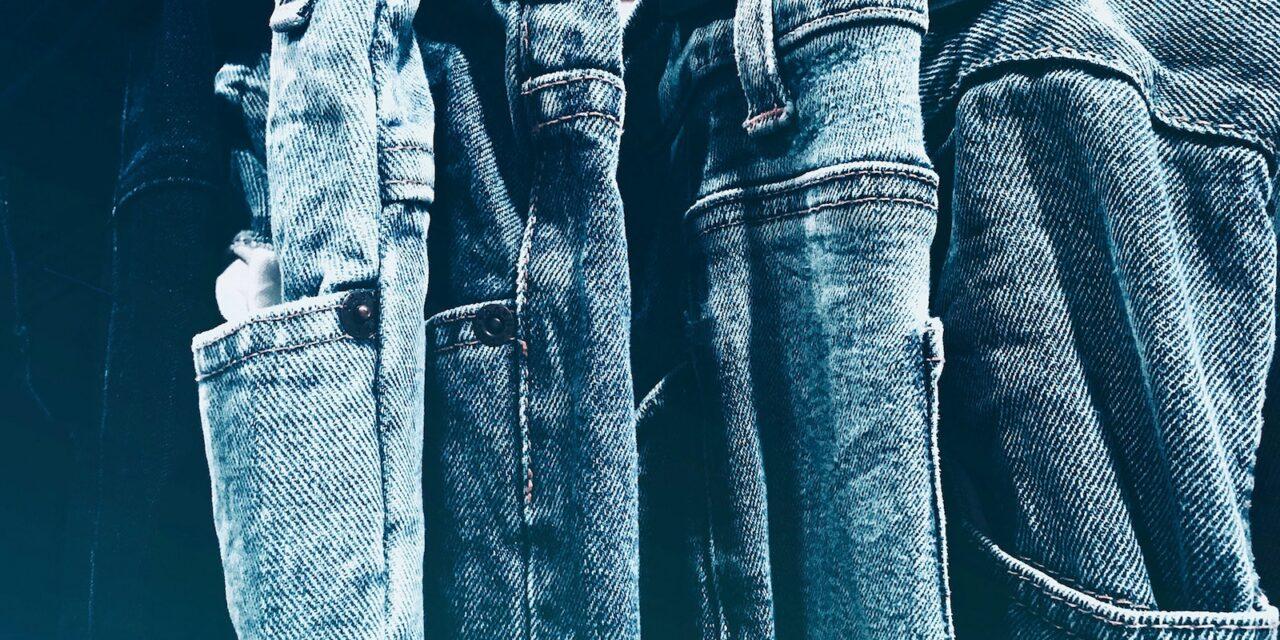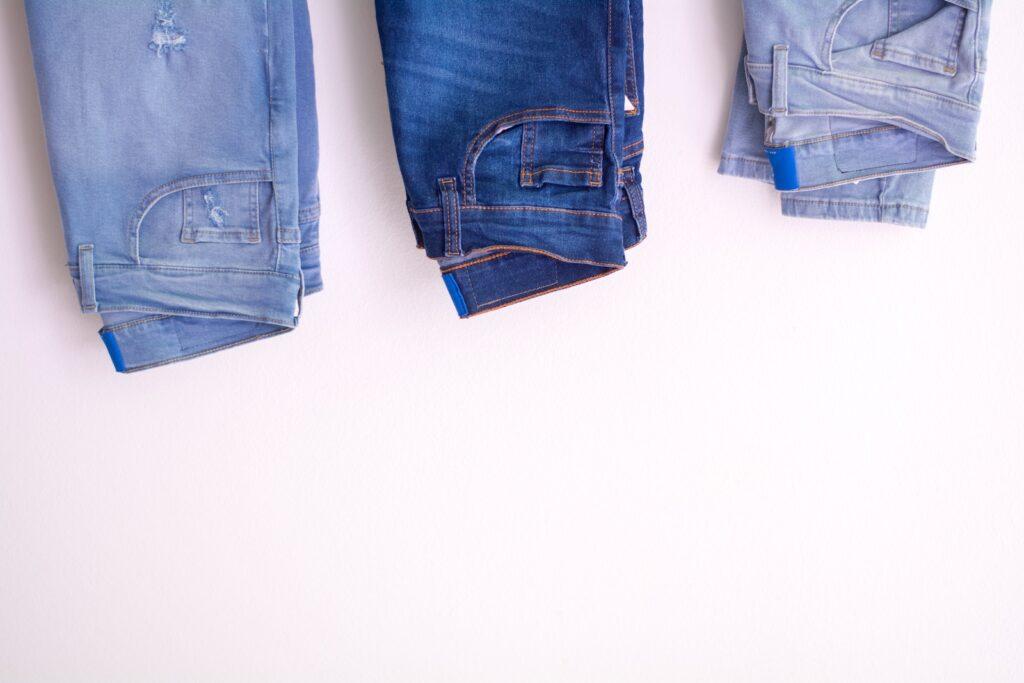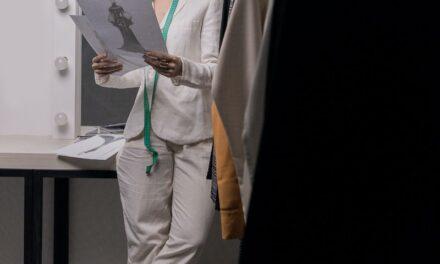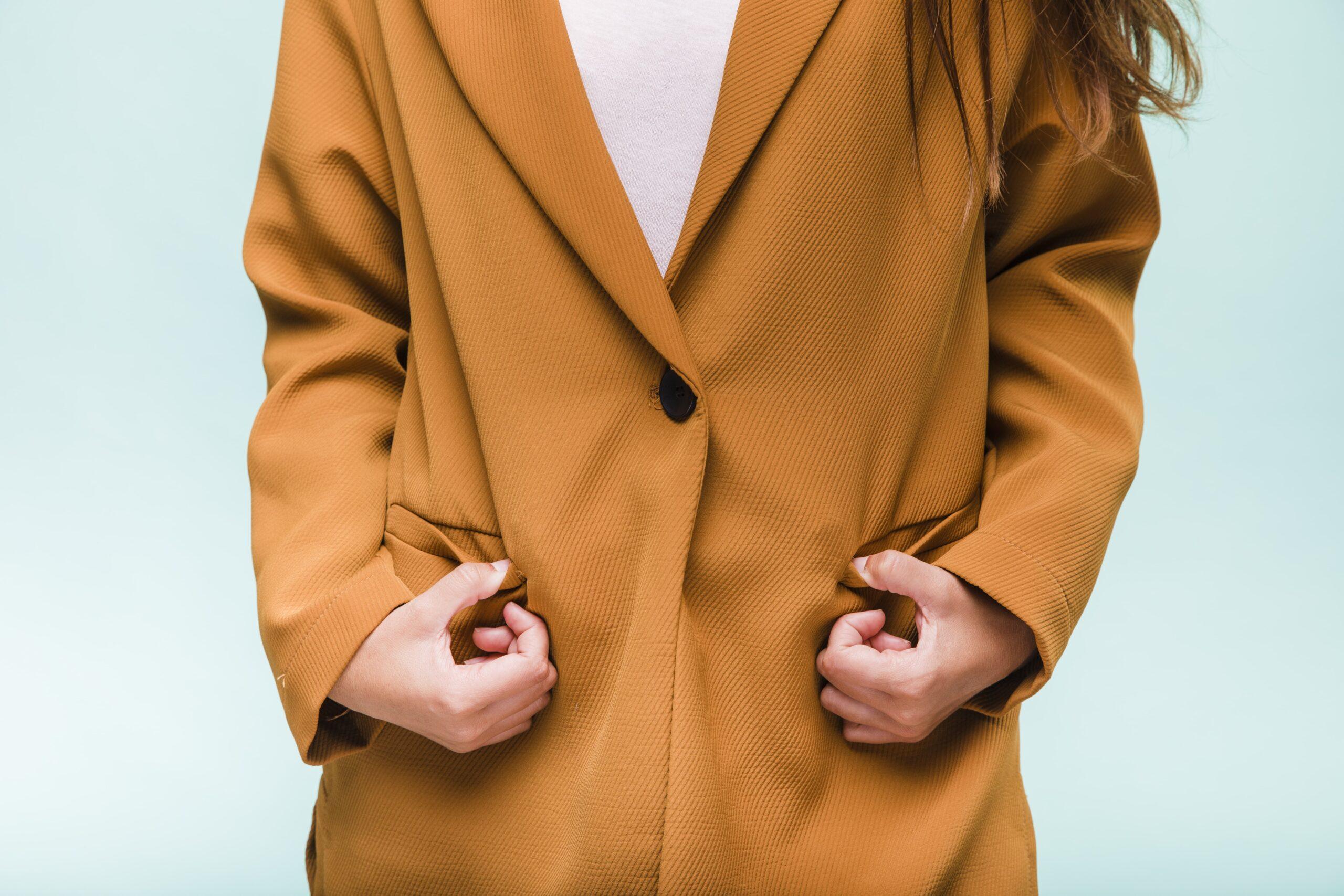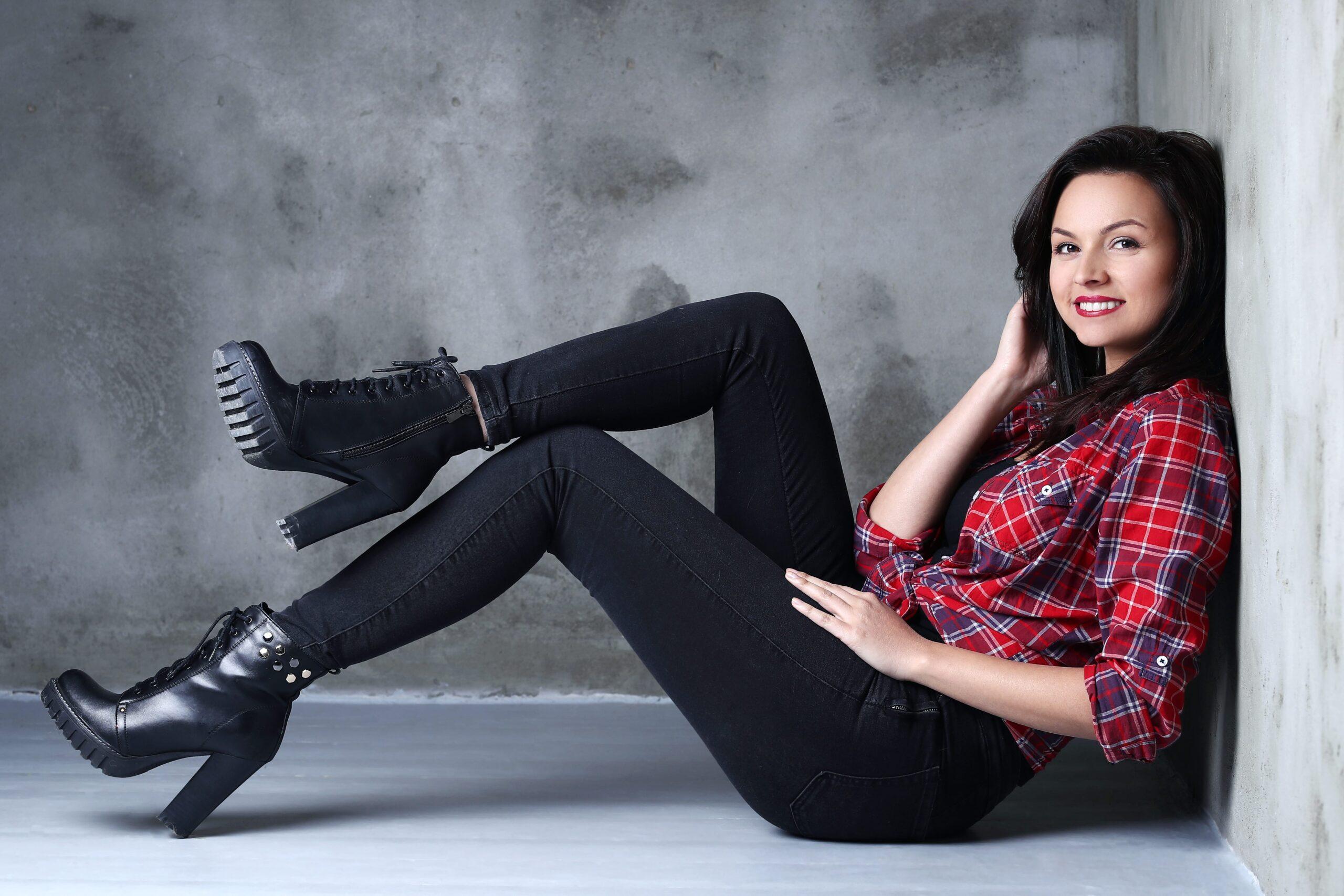Jeans have been a staple of fashion for over a century, worn by people from all walks of life and in every corner of the world. They are versatile, comfortable, and stylish, lending themselves to endless combinations with other clothing items. But what are jeans exactly? A pair of denim pants? A cultural icon? A statement piece? In this article, we explore the different meanings behind this ubiquitous item of clothing.
In this article, you will discover what does a pair of jeans mean and the true meaning of a pair of jeans. You will also learn about its history, symbolism, manufacturing process and environmental impact in this detailed article.
Definition of a Pair of Jeans
A pair of jeans is a type of pants made from denim fabric. The word “jeans” is believed to have originated from the French phrase “bleu de Genes,” referring to the blue fabric that was produced in Genoa, Italy during the 16th century. Over time, denim became popular among American workers due to its durability and practicality.
Today, jeans come in various styles – skinny, straight legged, bootcut – as well as washes and colors – light blue wash, dark indigo dyeing – making them an essential item in most wardrobes. They are commonly paired with t-shirts or blouses but can also be dressed up with jackets or blazers for more formal occasions.
Brief History of Jeans
Jeans were first invented by Levi Strauss and Jacob Davis in 1873 as durable workwear for miners during the California Gold Rush. Their design featured rivets on areas prone to wear and tear such as pockets and waistbands.
Initially marketed towards men who worked outdoors or performed manual labor jobs like cowboys or railroad workers, jeans were later adopted by women who sought comfort and practicality while challenging gender norms. During World War II, jeans gained even more popularity among soldiers who wore them off-duty as casual wear.
After the war ended in 1945, Hollywood movies featuring actors like James Dean popularized jeans among teenagers and young adults. The 1960s saw the emergence of counterculture movements like hippies and rockers who embraced jeans as a symbol of rebellion against mainstream society.
Significance of Jeans in Modern Culture
Today, jeans have become a universal symbol of youth, individuality, and style. They are worn by people from all age groups, social classes, and cultures. In addition to being a fashion staple, jeans have also been adopted as political statements or symbols of identity.
For example, during the anti-apartheid protests in South Africa in the 1980s, some activists wore jeans as a sign of solidarity with black South Africans who were not allowed to wear them under apartheid laws. Jeans have also been associated with different subcultures such as punk rockers or skaters who customize their denim pants with patches or graffiti.
Moreover, they have been used to raise awareness about environmental issues linked to denim production such as water pollution or waste generation. In sum, the significance of jeans in modern culture goes beyond aesthetics and encompasses a range of meanings related to history, politics, identity formation and sustainability practices.
The Symbolism of Jeans
Jeans have been a symbol of youth culture and rebellion since the 1950s. They have represented everything from freedom to individuality, and from comfort to practicality. But what exactly do jeans symbolize? Let’s take a closer look.
Freedom and Rebellion
Jeans are often associated with freedom because they were originally worn by workers who needed durable clothes that could withstand long hours and hard work. As such, jeans have always been associated with the working class, which has historically been seen as a symbol of resistance against oppressive power structures. In the 1950s, jeans became a symbol of youthful rebellion against authority.
Iconic figures like Marlon Brando and James Dean popularized jeans in Hollywood movies as symbols of anti-heroism. The rebellious spirit attached to jeans has persisted into modern times with punk rockers, hip hop artists, and other subcultures adapting them into their style.
Individuality and Self-Expression
Jeans are also seen as a way for individuals to express their unique identities through fashion. By wearing jeans in different cuts and colors or adding patches or designs people can show off their personality without saying anything at all. The customization options available through denim make it easy for people to express themselves while maintaining comfort.
Denim is also versatile enough that it can be dressed up or down depending on the occasion while still retaining its iconic casual nature. This makes it an attractive option for people who wish to show off their individuality without being overly flashy or uncomfortable in formal attire.
Comfort And Practicality
Perhaps one of the most significant reasons behind denim’s enduring popularity is its comfort relative to other fabrics traditionally used in clothing production like wool or linen. Jeans are made from cotton which is both comfortable on skin yet durable in its wearability.
The practical nature of jeans is also important. They can easily be worn for a variety of activities, from working out to going out for a casual evening.
This versatility makes them an essential part of nearly everyone’s wardrobe and explains why they have remained popular throughout the decades. The symbolism associated with jeans is multifaceted and deeply ingrained in society.
With their history rooted in hard work and resistance, jeans have come to represent freedom, rebellion, individuality, self-expression, comfort and practicality all at once. They are not just a pair of pants but an iconic symbol that will likely remain relevant for generations to come.
The Different Styles of Jeans
Jeans come in various styles and designs that cater to diverse preferences and body types. Each style has its unique features that distinguish it from the others, making them popular among different groups of people. The main styles of jeans include skinny jeans, bootcut jeans, and high-waisted jeans.
Skinny Jeans: Fashionable and Versatile
Skinny jeans are form-fitting pants that hug the legs tightly and taper towards the ankles. They became popular in the early 2000s, especially among young people who embraced a more fitted look. Skinny jeans come in a variety of colors, washes, and fabrics, allowing them to be dressed up or down for different occasions.
Despite their tight fit, skinny jeans can flatter many body types. They elongate the legs for petite women while creating a sleek silhouette for curvier figures.
Skinny jeans are versatile enough to be paired with different tops such as t-shirts or blouses. They can also be worn with heels or sneakers depending on the desired look.
Bootcut Jeans: Timeless Classic
Bootcut jeans have been around since the 1970s and remain one of the most popular styles today. They are characterized by a fitted waistline that gradually widens below the knee to accommodate boots or other footwear.
Bootcut jeans are known for their flattering shape as they elongate the legs while balancing out broader hips and thighs. These versatile pants can be dressed up with heels for evening wear or paired down with sneakers for casual events.
High-Waisted Jeans: Retro yet Modern
High-waisted jeans were popular in the 1980s but made a comeback in recent years as fashion trends shifted towards vintage looks. These pants sit above the natural waistline, creating an illusion of longer legs while slimming down the waistline. High-waisted jeans come in different cuts, including straight-leg, skinny, and flared.
They are popular among women who want to create a retro yet modern look that accentuates their curves and flatters their shape. These pants can be paired with crop tops or tucked-in shirts for a chic appearance.
The Manufacturing Process
Jeans have come a long way since their humble beginnings as durable work pants for miners and cowboys. Today, jeans are a highly sought-after fashion item manufactured using complex processes that involve a combination of artistry and technology.
Raw Denim Production
The first step in creating a new pair of jeans is to source the raw denim material. Raw denim is simply untreated denim that has been woven on a shuttle loom.
This weaving process creates unique characteristics in the fabric, including slubbing (irregularities) and selvage edges. The quality of the raw denim will ultimately determine the quality of the finished product.
Once sourced, the raw denim is typically sanforized to prevent shrinkage during subsequent washes. Sanforization involves pre-shrinking the fabric by running it through heated rollers under pressure.
Dyeing Process
The next step in creating jeans is to dye the raw denim fabric. Indigo dye is traditionally used to create blue-colored jeans, although other colors are available as well. The dyeing process can be done using either rope dying or slasher dying methods.
Rope dying involves tying sections of fabric together with rope and then dipping them into a vat of indigo dye. This process creates variegated coloration on each section that gives each pair of jeans its unique look.
Slasher dying involves spraying or dipping fabric into indigo dye using large machinery arranged in multiple tanks. This process ensures consistent color throughout each piece but produces less variation than rope dying.
Finishing Techniques
Once dyed, various finishing techniques may be applied to achieve different styles and looks for each pair of jeans. Some common finishing techniques include: – Sandblasting: This technique uses high-pressure air to blast sand onto specific areas of the denim fabric, creating faded or distressed areas.
– Whiskering: This technique involves creating faded or worn-looking areas around the crotch and thighs by using sandpaper or wire brushes. – Ripping and Patching: This technique involves tearing holes or rips in the denim fabric and then patching them with other fabrics, such as leather or denim scraps.
Ultimately, the finishing techniques used will depend on the desired style of the jeans. The manufacturing process is a complex, multi-step process that requires a combination of artistry and technology to create the perfect pair of jeans.
The Environmental Impact of Jeans Production
Jeans have become a staple in the modern wardrobe. However, their production and manufacturing process have a significant impact on the environment.
From the amount of water used during production to the chemicals used in dyeing processes, there are several ways in which denim contributes to environmental degradation. In this section, we will explore some of these issues and examine how denim brands are making efforts towards sustainability.
Water Consumption During Manufacturing
One of the most significant environmental issues related to denim production is water consumption. It takes an average of 1,800 gallons of water to produce a single pair of jeans. This amount is concerning when you consider that many countries around the world suffer from water scarcity.
One way that denim brands are addressing this issue is by using new technologies that reduce water usage during manufacturing. For example, Levi’s has implemented a program called “Water
Chemical Use in Dyeing Process
Chemical use in dyeing processes is another significant environmental issue related to denim production. The chemicals used can be harmful not only to the environment but also to workers who handle them daily.
To address this issue, many brands are now using natural dyes and organic cotton for their products. Additionally, some manufacturers have developed new technologies that allow for dyeing processes without using any chemicals at all.
Sustainability Efforts by Denim Brands
In recent years, many denim brands have made efforts towards sustainability by implementing various programs such as reducing waste and carbon emissions or switching to organic cotton. One brand that has made significant strides towards sustainability is Patagonia with its “Worn Wear” program.
The program encourages customers to repair and reuse their clothing instead of buying new ones, which reduces the amount of clothing waste in landfills. Additionally, Patagonia uses recycled materials in their jeans and has implemented a rigorous chemical management program to reduce harmful chemicals’ use.
While denim production has a significant environmental impact, denim brands are making significant efforts towards sustainability through new technologies and sustainable practices. As consumers become more environmentally conscious, they can also play a role in reducing the environmental impact of denim by choosing brands that prioritize sustainability.
Caring for Your Jeans
Washing and Drying Tips
Jeans are one of the most versatile items in anyone’s wardrobe, but it is important to care for them properly to ensure that they last as long as possible. One of the biggest debates in the world of denim is how often you should wash your jeans.
Some people swear by never washing their jeans, while others wash theirs after every wear. The truth lies somewhere in between.
Washing your jeans too often can cause them to fade and lose their shape, but not washing them at all can result in a buildup of dirt and bacteria. A good rule of thumb is to wash your jeans every five to ten wears.
When it comes to washing your jeans, it’s important to turn them inside out before putting them in the machine. This helps prevent fading and keeps any embellishments from snagging on other clothes or the machine itself.
Use cold water and a mild detergent specially made for dark clothing or denim. Avoid using fabric softener or bleach as they can damage the fabric.
How to Prevent Fading
Fading is a natural part of aging for any pair of jeans but there are ways you can slow down this process. One way is to avoid washing your jeans too often as mentioned earlier; each wash will remove some dye from the fabric causing fading over time. Another way is by using vinegar instead of regular detergent when you do decide to wash them again after multiple uses.
Vinegar helps set the indigo dye into the fabric, helping it resist fading. Another tip for preventing fading is avoiding direct sunlight exposure when drying or storing your jeans since UV light causes fading over time.
Extending The Life Span Of Your Favorite Pair
If you’ve found that perfect pair of jeans that fits like a glove, you’ll want to make sure they last as long as possible. One way to extend the life span of your jeans is by avoiding using a dryer. Instead, let them air dry on a clothesline or drying rack.
This prevents shrinking and weakening of the fabric in high heat from the dryer. Another way to keep your jeans in great condition is by storing them properly.
Fold them neatly, and avoid hanging them on hangers which can cause unnecessary stretching and misshapen lines. A good trick is to fold each leg so that it meets in the middle, then fold the waistband down over it.
Caring for your jeans properly can make all the difference in how long they last and how great they look even after years of use. By following these tips for washing, preventing fading and extending their life span you’ll keep your favorite pair looking great for years to come!
Conclusion on What Does A Pair Of Jeans Mean
Jeans have been a staple in fashion for over a century and continue to be popular today. Their versatility, durability, and comfort have made them a wardrobe essential for people around the world. The enduring appeal of jeans lies in their ability to reflect the values and attitudes of our society at any given time.
The enduring appeal of jeans
Since their invention, jeans have remained a popular choice of clothing due to their practicality and durability. They are versatile enough to be dressed up or down, worn for work or leisure, and suit almost any body type. This makes them an ideal choice for people of all ages, cultures, and backgrounds.
Jeans also hold cultural significance as symbols of social mobility, freedom, rebellion, and individuality. They have represented different subcultures throughout history – from cowboys to rockstars – giving wearers a sense of belonging while expressing their unique style.
Jeans as a reflection of our society
Jeans are not just clothing items; they also reflect the values and attitudes of our society. For example, during times when there was interest in preserving natural resources or political turmoil occurred among low-income communities that struggle with financial restrictions on clothing choices due to affordability issues such as “fast fashion,” sustainable denim brands emerged which emphasize environmentally-friendly processes. Historically speaking during times like this we may see designs that emphasize thrift store finds highlighting socially responsible shopping among consumers emphasizing eco-conscious purchases over trendy ones.
The future outlook for denim
As new trends emerge within the industry (such as athleisurewear), it remains clear that denim will continue to be an essential item in wardrobes everywhere. The demand for environmentally friendly production processes is increasing rapidly with consumers paying more attention than ever before regarding what they wear (and where it comes from).
As we move forward into an era with a greater emphasis on sustainability practices and environmentally conscious choices, it is inevitable that the fashion industry will change to meet these new demands. Denim manufacturers can help lead the way by creating new technologies or refining their processes to be more sustainable, thus ensuring a bright future for denim that remains stylish and relevant in years to come.

